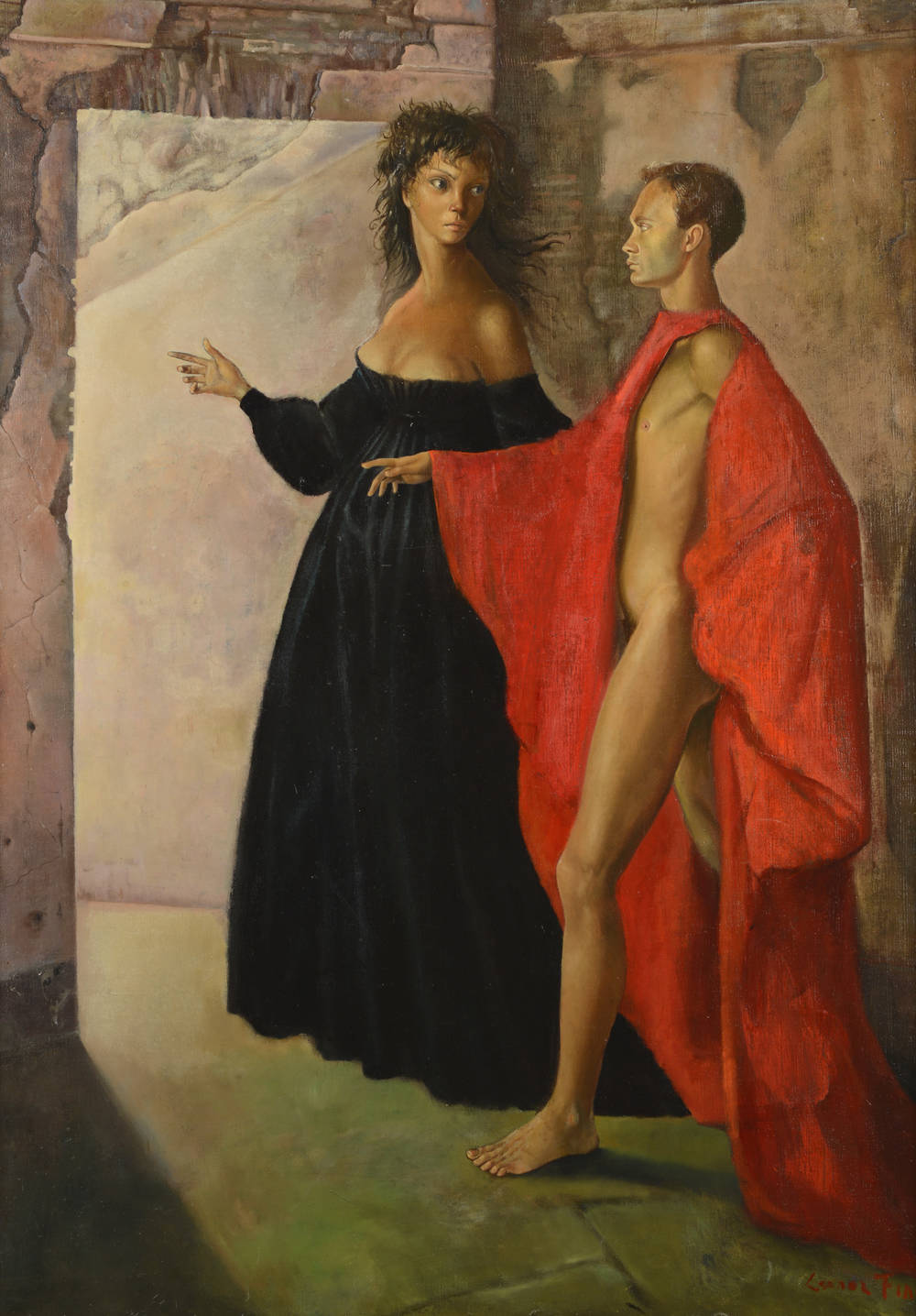The women surrealists redefined female roles – and actively opposed the image of women as muses, dream beings and passive objects.
All the different local versions of Surrealism had one thing in common: The trends in art and ideas were supposed to serve as a tool for the imagination of alternative worlds. While this meant that Surrealist writings and art works often critically questioned traditional structures such as the patriarchal, imperialist model of society, the depiction of women was initially somewhat less progressive.
Rather, the works by the male Surrealists followed the centuries-old tradition of alternately idealizing and degrading women. And although – or possible precisely because – the fascination of women was a major topic for the Surrealists, their circles remained dominated by men. It’s no wonder, therefore, that at first only few female artists identified with the movement. And yet: The imaginative and political potential of Surrealism harbored an emancipatory dimension for them too. Artists like Rachel Baes, Jane Graverol, Dorothea Tanning and Leonor Fini pilloried the heteronomy of women and nevertheless celebrated them as headstrong, powerful beings. Their pictures reinterpreted the social and art-historical roles assigned to them.
The female artists pilloried the heteronomy of women
The body, as a machine, a fragment, a doll, was a central Surrealist theme. Perhaps the best known – and the most obsessive – examination of the doll can be found in Hans Bellmer’s series of photos, which he published under various titles during the 1930s and 1940s. Using an almost life-size torso of a doll, Bellmer put together ever more sinister and, most notably, childish-erotic constructions of the body. The artist, who was born in Poland, described the object of his experimentation as “an artistic girl with multiple anatomical possibilities.”
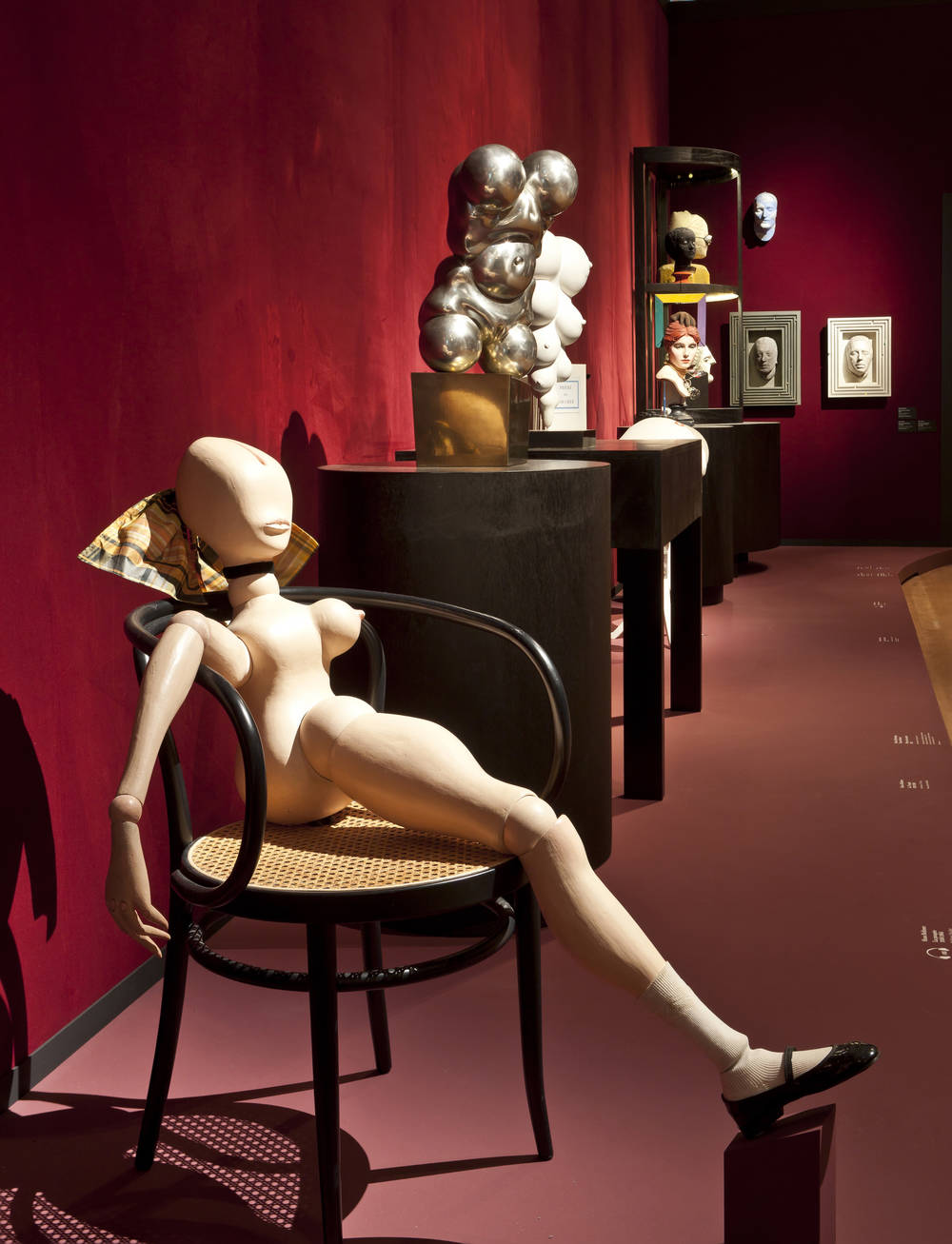
Sometimes, four porcelain-white legs would extend into white ankle socks and black patent-leather shoes, while elsewhere a torso appears with five round breasts. Often the doll simply lies there in all its elements, as a sad heap of arms, legs and knee joints. Generally, we encounter it in a domestic setting: The doll falls down stairs, stands forlorn in the kitchen, or lies carefully arranged on white bed sheets. Bellmer’s photographs show the female body, which here radiates both girlish innocence as well as a womanly, almost threatening eroticism, as unconditionally available, indeed malleable for the male gaze and grasp.
Bellmer’s photographs show the female body as unconditionally available
Rachael Baes’ doll figure in “La Polka” (1946) is neither erotic nor childish. Appearing as a tailor’s dummy fashioned from wood, her figure sporting a hat and boots takes a step towards the observer. There are no windows or doors in the bare room behind her, but it is crisscrossed by strings hung loosely between hooks on the walls. Strings that could tie someone up, a room with no way in or out, a body that itself looks like a cage – here the doll is depicted in a state of momentary or even permanent incarceration.
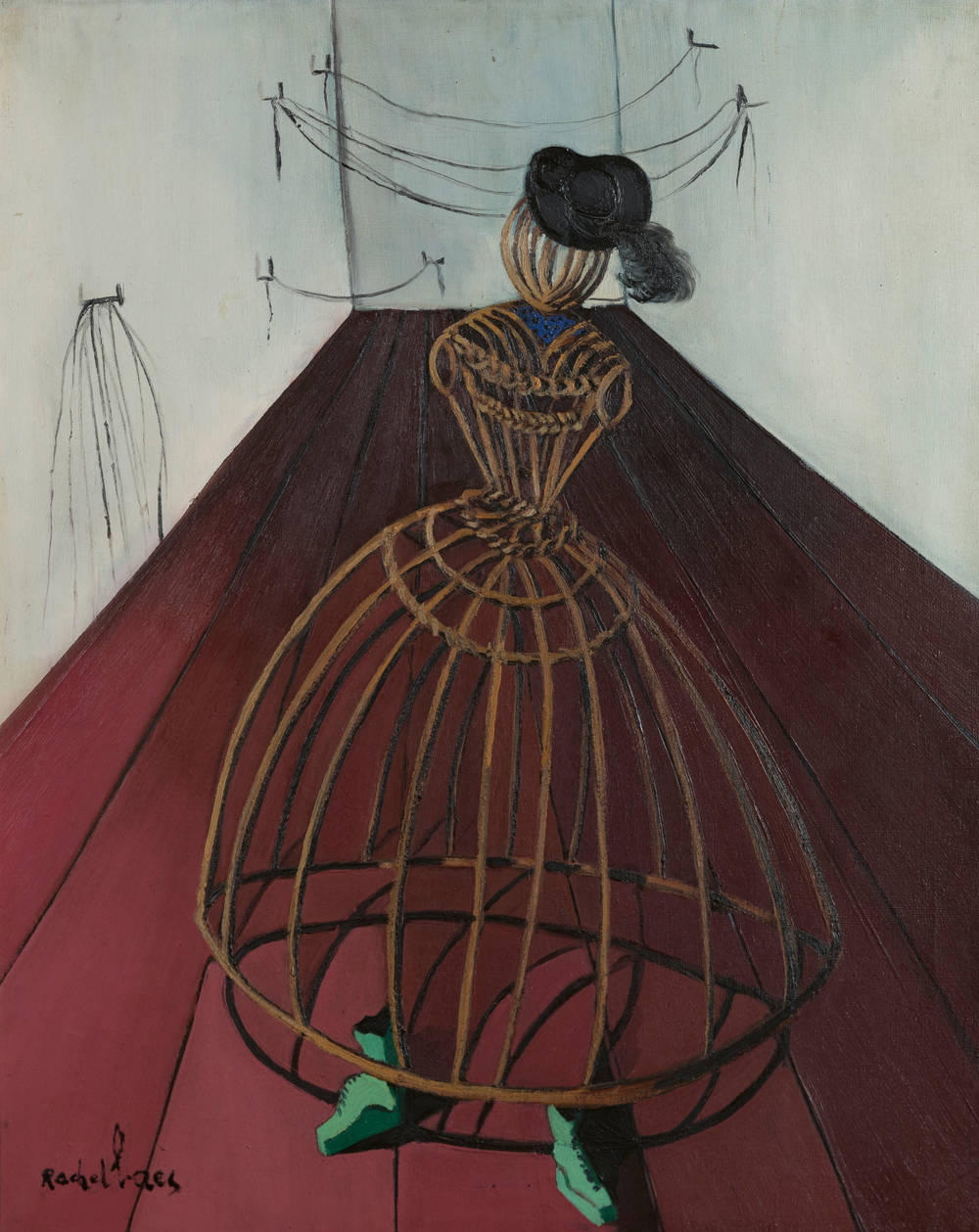
Many of Baes’ paintings show female figures in dark, abandoned corridors or rooms. Where they do have windows, all we can see out of them is the dark night sky. Interiors that appear to offer neither protection nor safety can also be seen in the works by Dorothea Tanning. Her figures, generally children and women, seem to move through apparently endless labyrinths of doors and corridors, encountering mythical creatures or oversized sunflowers. And as soon as rain falls from the ceiling, a wind whips through a corridor, a tree grows in a bedroom and a fleck of blue sky can be seen in the fireplace, the fantastical becomes merged with the domestic.
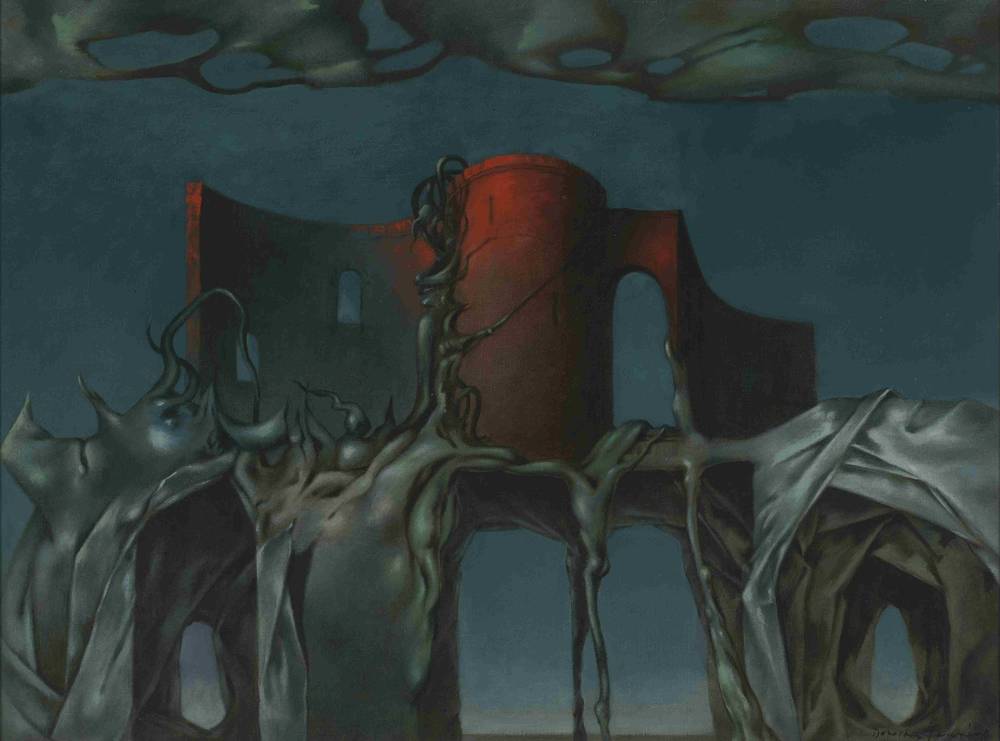
In addition to dolls, female nudes, woman as a muse, are also incorporated and reinterpreted in Surrealism. René Magritte generally painted his women as classic beauties; statuesque and nude, mysterious and silent. “La Magie Noire” (1946) shows one of Magritte’s favorite themes from the 1940s: We see a naked woman in an indeterminate landscape. In this case, a kind of 20th-century Venus stands before a sea, the blue surface of which reflects the clouds of the evening sky. She leans against a stone; on her shoulder there is a white dove, and her whole body and even her eyes appear to be painted over with a soft blue, which transitions into a warm reddish-orange at her navel, precisely where the sea meets the evening sky.
Two decades later Jane Graverol painted “L’Esprit saint” (1965), and here again we witness the same elements: evening sky, stone, bird, the silhouette of a female body. Or, as Graverol appears to suggest to us, this is what we want to see, because unlike in Magritte’s painting, here the woman appears only implicitly in the image. The gap between two rockfaces forms the shape of her breast, waist and hips, while a diving swallow marks what would be the woman’s pudendum.
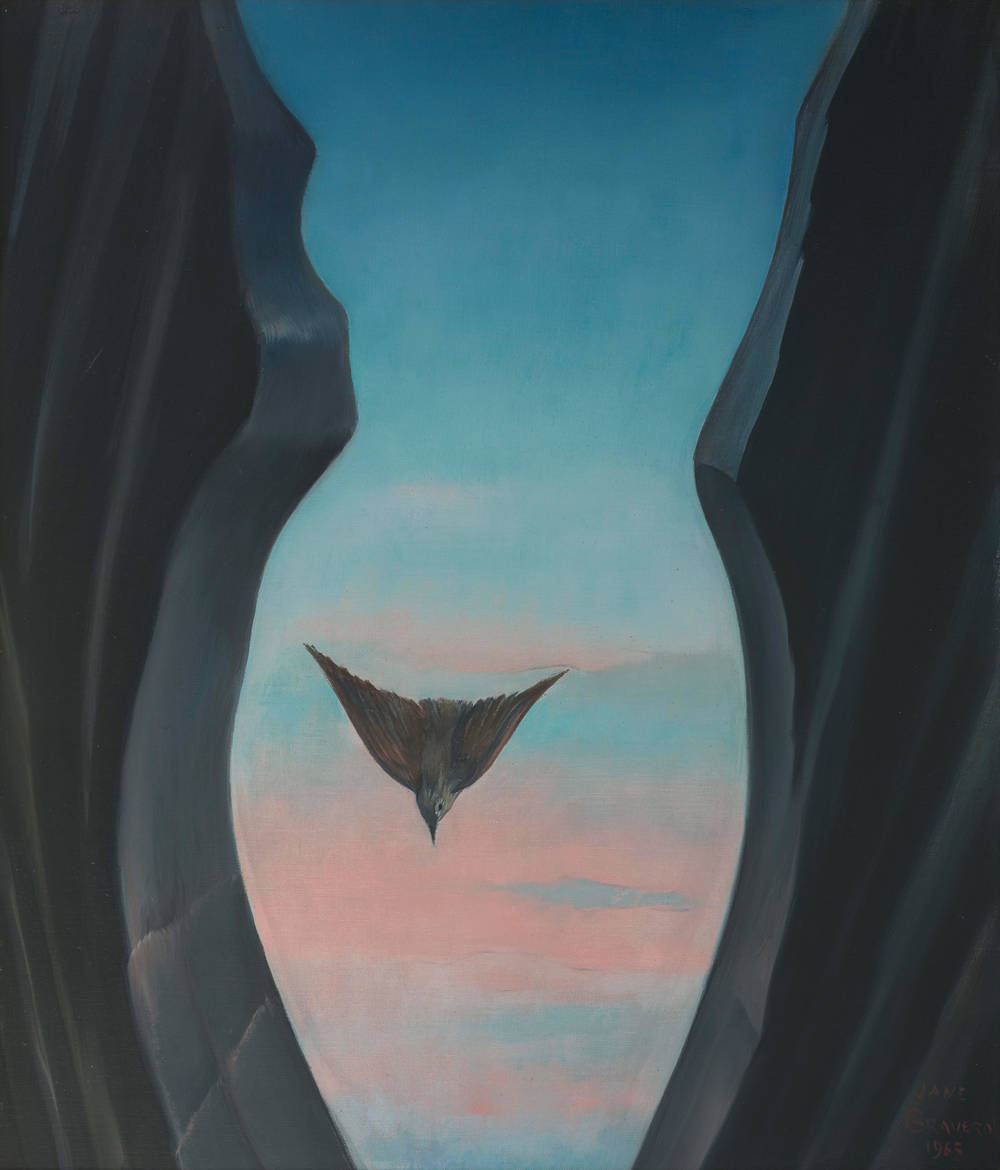
While Magritte combines femininity, classic ideals of beauty and closeness to nature, Graverol’s work can be considered an ironic commentary on precisely such depictions of women. Magritte’s passive woman cannot cast back the covetous gaze her body provokes, but Graverol, in contrast, throws the observer’s perspective back at them. Artist Leonor Fini turns gender roles firmly on their heads. She painted dreamlike, erotic scenarios with male nudes, showing them in dainty yet vulnerable poses like those in which we would otherwise see women: sleeping, lying on their backs, legs bent so the crotch is exposed or perhaps covered by soft, folding fabric. Often the youthful, androgynous body is watched by a woman.
Leonor Fini turns gender roles firmly on their heads
Sometimes it is the artist herself, other times a hybrid creature, half woman, half mythical being, as in “Divinité Chtonienne guettant le sommeil d’un jeune homme” (1946). In “Dans la tour” (1952), a woman resembling the artist points the way for a young man. While she is clothed in a black dress, the man’s body is only partially covered by the red fabric that hangs over his shoulders. Bright light streams through an opening in the wall – “that way”, the woman appears to be saying with her resolute gaze as she points her finger. It is an image that was steeped in symbolism for Fini and her fantastic contemporary women artists.
